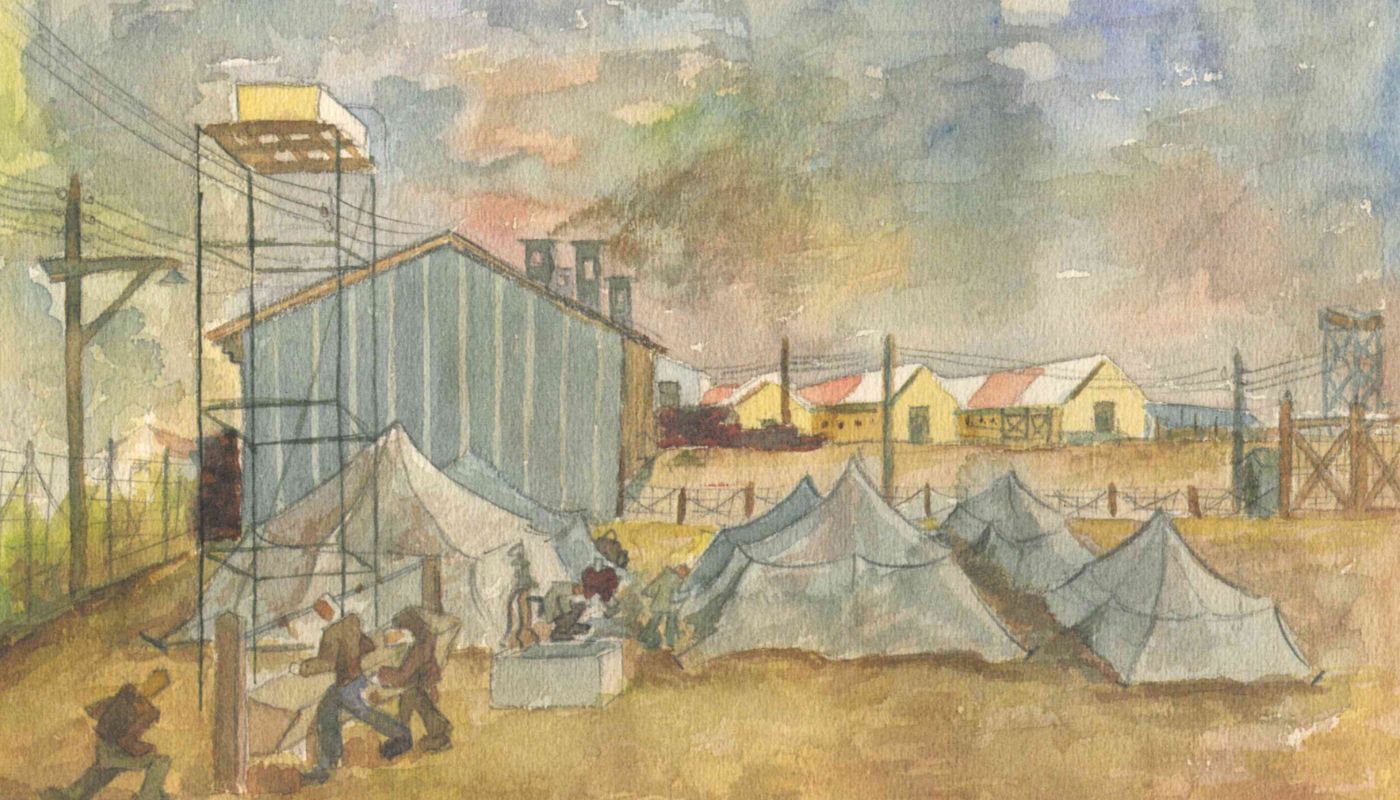Origin
The camp in Gonars was intended by the Kingdom of Italy first for Russian prisoners of war from the First World War. It was opened to Slovenian and Croatian internees on 23 February 1942 and was set in the middle of the Friulian plain, surrounded by corn fields and vine and mulberry plantations. Slovenian civilians were led there from the Ljubljana region, from Rab and from Monig. It was abolished by the force of the situation at the capitulation in 1943. It was surrounded by a fence four feet high, and around it were threaded reels of barbed wire, and on the outside erected guard towers and towers with searchlights. It was not until 1973 that a memorial appeared, and the skeletons of almost five hundred corpses were transferred to the crypt.
Trench excavation.
A successful escape from the Gonars concentration camp took place on the night of 30 to 31 August 1942, when eight internees escaped from it, including important members of the Communist Party of Slovenia and activists of the National Liberation Struggle.
To begin the tunnel, they chose the Beta area, which was built along the wire and on the lying ground; Under the floor, the shack had an empty space needed to store materials. It housed trusted residents, many of whom were Party members.
In the barracks, the members of the committee occupied the bunk beds in the lower left corner, fenced them off with boards and blankets, removed the straw bed and planks under the angled bunk bed, and began digging. Many confidants from many shacks came to work, and even more helped the diggers with food and materials.
In the space between the bunk beds, the diggers first had to change into work clothes. They worked with tools they made themselves and objects they collected around. The work was carried out in three shifts of eight hours each. There was one digger, one trench lifter, and one drifter on each shift; As the tunnel lengthened, there were more and more carriers who fed themselves wrapped in a blanket of excavated material.
At the bottom of the empty space, they first dug a two-meter-deep pit and began to remove the soil from it. When a part of the tunnel collapsed during a storm, they buried it and began digging a new one in the other direction. Only the compass on the clock served them to determine the direction. The diggers were overwhelmed by the camp administration, who often tightened their guard and called outdoor gatherings several times.
- In August, the surrounding farmers began harvesting corn around the camp. As without the cover provided by the corn, the escape would hardly have succeeded, it was decided to leave immediately on the night of August 30-31. The night was quiet and peaceful, and therefore unsuitable for escape. The occupants of the neighboring shack concocted a party to disguise the sounds.
At ten o’clock
At ten o’clock the trench was breached, and two campers crawled out of it. They crawled to the agreed spot a few hundred yards away from the camp. Then a guard came to a nearby guard hut and the continuation of the escape was temporarily prevented. When he left at midnight, six more people crawled out of the tunnel. The seventh in a row made too much noise, the guard noticed them, so he raised the alarm. Continuing the escape was not possible for others; The six on the runaway ran away, but with the first two they could no longer find a connection. After four days of wandering across the plain, two of them found an agreed javka near Kojsko v Brdy, while the remaining six met a lumberjack in the surrounding forest, who connected them with the Partisans. Italian guards discovered the tunnel and moved many male prisoners to other camps, far from the border with Slovenia.
On one of the following nights, they all crossed the Soča River with a partisan patrol and arrived at the assembly point of a larger partisan unit above Široko njiva on the Banjška plateau. They then returned to their combat units and resumed their insurgent activity.

